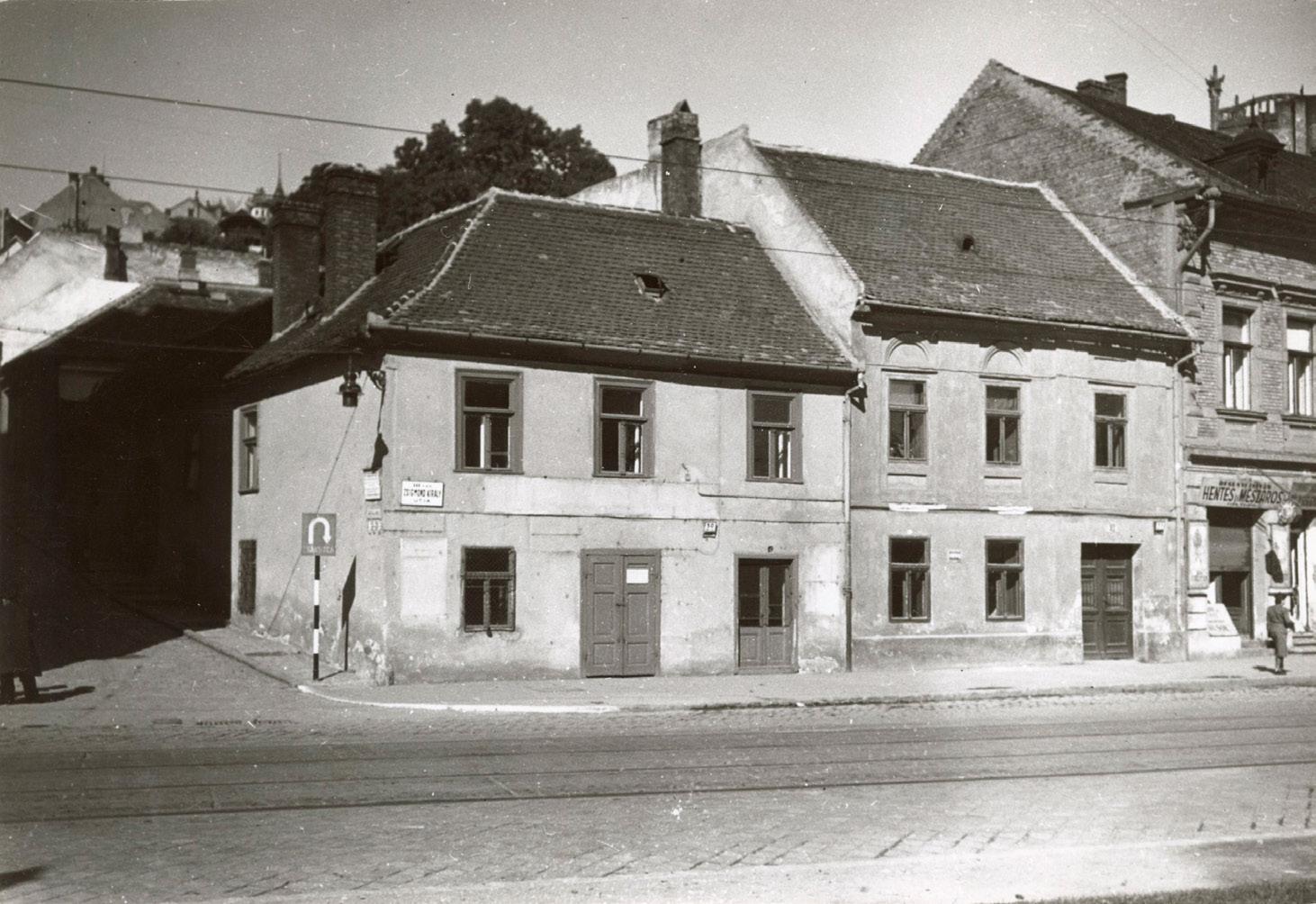
3 minute read
KISBUDA
The building for ‘Kisbuda’ has been operating as a bar or restaurant since over a hundred years ago. It first belonged to József Löwinger, then to Károly Zwack. After World War II, the venue attracted guests with its famous fish soup and Schrammelmusik. It re-opened under the name “Kisbuda Halászkert” in 1954, but up until the seventies, it was kind of known as a “grease pit”. Alice Meződi took over management in 1976, and under her reign, slowly but surely Kisbuda became one of the main haunts of the Hungarian art scene. Celebrities such as U.S. president George W. Bush, his majesty Carl Gustaf XVI, king of Sweden, and Marcello Mastroianni, who happened to be shooting one of his movies in
Hungary at the time, were among its patrons. The establishment managed to preserve the unique atmosphere of old-timey Óbuda restaurants up until the day it was closed down - May of 1992.When the office building was set to be built in this location, the restaurant was to be re-opened within the bounds of the new structure, but ultimately, it wasn’t. Despite the efforts of Mihály Ráday to prevent it, the old horse-chestnut tree on the yard was the first to go, followed by the façade that was supposed to be under protection as a landmark, but was deemed too damaged to be kept. The office building housed several restaurants after this, but none of them ever lived up to the success of ‘Kisbuda’.
Advertisement
KÉPJEGYZÉK / IMAGERY:
Borító: Cover:
A Gül Baba utca 1910 körül. A Zsigmond utca sarkán a 30. számú régi lakóház falán másoké mellett Haumann Ferenc üvegkereskedő hirdetése látszik. Erdélyi Mór felvétele. BTM KM Fgy.
Gül Baba st. circa 1910. On the corner of Zsigmond street, on the wall of the old apartment building under no. 30, amongst others, we can see the advertisement of Ferenc Haumann glassware salesman. Recorded by Mór Erdélyi. Source: Budapest History Museum/Kiscelli Museum, Photo Collection
6. oldal: page 6.:
A Frankel Leó út (akkor Zsigmond király útja) 30-32-es szám 1940 körül, D’Isoz Emil felvételén. A két épület a világháborúban pusztulhatott el. BTM KM Fgy.
30-32 Frankel Leó street (called Zsigmond Király útja at the time) circa 1940, recorded by Emil D’Isoz. These two buildings were probably destroyed during WWII. Source: Budapest History Museum/Kiscelli Museum, Photo Collection
7. oldal: page 7.:
A Frankel Leó út 30-32. szám alatti telek 1961-ben, bal oldalt fent a Wagner-villa. A virágüzlet felirata alatt még olvasható Kanizsai Gyuláné neve. Fortepan/BFL/VÉO
The lot under 30-32 Frankel Leó in 1961, with the Wagner-villa on the upper left.The name of Mrs. Gyula Kanizsai is still visible under the sign of the flower shop.Source: Fortepan / Budapest City Archives, Photos of the Urban Planning and Architecture Department
12-13. oldal: pages 12-13.:
Guttmann Mór vendéglője a mai Frankel Leó út 26-28. szám alatt az 1890es években, Weinwurm Antal felvétele. BTM KM Fgy.
The restaurant of Mór Guttmann under 26.28 Frankel Leó, in the 1890’s. Recorded by Antal Weinwurm.Source: Budapest History Museum/ Kiscelli Museum, Photo CollectionDepartment
14. oldal: page 14.:
Épül az OTP ház a Frankel Leó út 26. és a Török u. 7-9. szám alatt 1958ban. Harsányi József felvétele. BTM KM Fgy.
The OTP building under construction on the corner of 26 Frankel Leó and 7-9 Török street in 1958. Recorded by József Harsányi.
Source: Budapest History Museum/Kiscelli Museum, Photo Collection
15. oldal: page 15.:
24. oldal: page 24.:
25. oldal: page 25.:
A Malomtó Bisztró fénykorában, 1962-ben. Fortepan/Bauer Sándor
The golden age of Malomtó Bistro in 1962. Source: Fortepan/Sándor Bauer
Életkép a Frankel Leó út - Komjádi Béla utca sarkán, 1970-ben. Fortepan/Gyulai Gaál Krisztián
Slice of life on the corner of Frankel Leó and Komjádi Béla street in 1970. Source: Fortepan/Krisztián Gyulai Gaál
A Frankel Leó út 88-90. az 1960-as években. A 84-92. szám alatti OTP lakóházakat Boross Zoltán tervezte. BTM KM Fgy. 88-90 Frankel Leó st. during the 1960’s. The OTP apartment buildings uner 84-92 had been designed by Zoltán Boross. Source: Budapest History Museum/Kiscelli Museum, Photo Collection
26. oldal: page 26.:
27. oldal: page 27.:
28. oldal: page 28.:
Az étterem bejárata az 1980-as években. Fotó: Meződi Alice The entryway of the restaurant in the 1980’s. Photograph by: Alice Meződi Csoportkép a személyzetről. Fotó: Meződi Alice
Group photo of the staff. Photograph by: Alice Meződi
A Koreai Kulturális Központ épülete 2019-ben. Fotó: Réthey-Prikkel Tamás The building of the Korean Cultural Center in 2019. Photograph by: Tamás Réthey-Prikkel







